Hey there, folks! Let’s dive into the captivating world of Egypt – a land that has mesmerized humanity for centuries. It’s a place filled with pharaohs, pyramids, and an ancient mystique that continues to pique our curiosity. But what truly keeps us spellbound are the incredible treasures and artifacts left behind by one of history’s most remarkable civilizations.
Egypt’s rich history stretches back over 5,000 years. As we journey through this incredible timeline, we uncover countless artifacts that unveil the genius, spirituality, and artistic mastery of the ancient Egyptians. From colossal statues to exquisitely decorated coffins, and from monumental pyramids to intricate hieroglyphs, these artifacts are windows into a civilization that thrived along the banks of the Nile.
So, join me on this enchanting voyage as we explore The Top Ancient Egyptian Artefacts. Each of these treasures is like a time machine, transporting us to a world where art, religion, and history converged in unparalleled splendor. We’ll take a closer look at monumental structures like the Great Sphinx and the Pyramids of Giza, as well as intricate objects like the Rosetta Stone and the Book of the Dead.
The Great Sphinx: Guardian of Giza
The Great Sphinx, one of the world’s most iconic and enigmatic statues, stands as a silent sentinel in front of the Pyramids of Giza. This colossal creature, with the body of a lion and the head of a pharaoh, has captivated the human imagination for millennia.
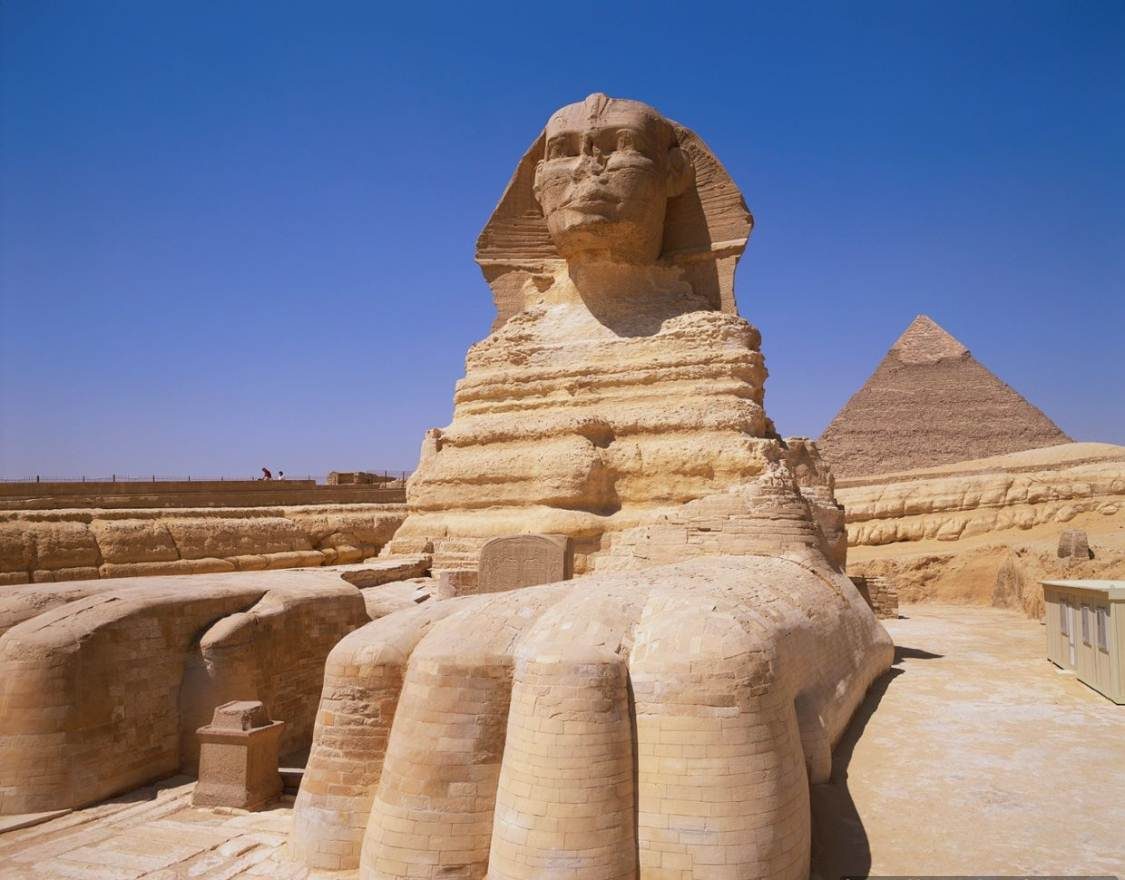
Origins and History
The origins of the Great Sphinx are shrouded in mystery. It is believed to have been built during the Old Kingdom of Egypt, around 2500 BC, making it over 4,500 years old. Its creation was likely attributed to Pharaoh Khafre, whose pyramid stands behind the Sphinx. The Sphinx was carved directly from the bedrock of the Giza Plateau.
The Creator
The identity of the sculptor or artists who crafted the Great Sphinx remains unknown, adding to the mystique that surrounds this monumental statue. However, it is widely believed that the pharaoh Khafre, in whose honor the pyramid and the Sphinx were created, is the figure represented by the Sphinx’s face.
Fascinating Information
The Great Sphinx is not just a striking work of art; it has played various roles throughout its long history. It’s thought to symbolize the sun god Ra-Horakhty and served as a guardian of the pharaoh’s tomb. Over the centuries, it has witnessed the rise and fall of empires, from Ancient Egypt to the Roman Empire and beyond.
Standing at 66 feet (ca. 20 m) in height and 240 feet (ca. 73 m) in length, the Sphinx is an awe-inspiring testament to ancient Egyptian craftsmanship and engineering. It was originally painted with vibrant colors that have faded over time.
Yet, it’s not just the Sphinx’s impressive size that intrigues; it’s the riddles it presents. Why was it constructed? What is the significance of its unique combination of human and lion attributes? These questions continue to puzzle historians, archaeologists, and Egyptologists.
The Great Sphinx remains an enduring symbol of Egypt and an everlasting enigma. It guards the secrets of the past, silently watching over the Pyramids of Giza, inviting us to contemplate the mysteries of this ancient land.
The Pyramids of Giza: Ancient Marvels
The Pyramids of Giza are arguably the most iconic and enduring symbols of Ancient Egypt’s architectural prowess. These colossal structures, situated on the Giza Plateau just outside Cairo, continue to amaze and baffle visitors from around the world. Let’s take a closer look at these ancient marvels.
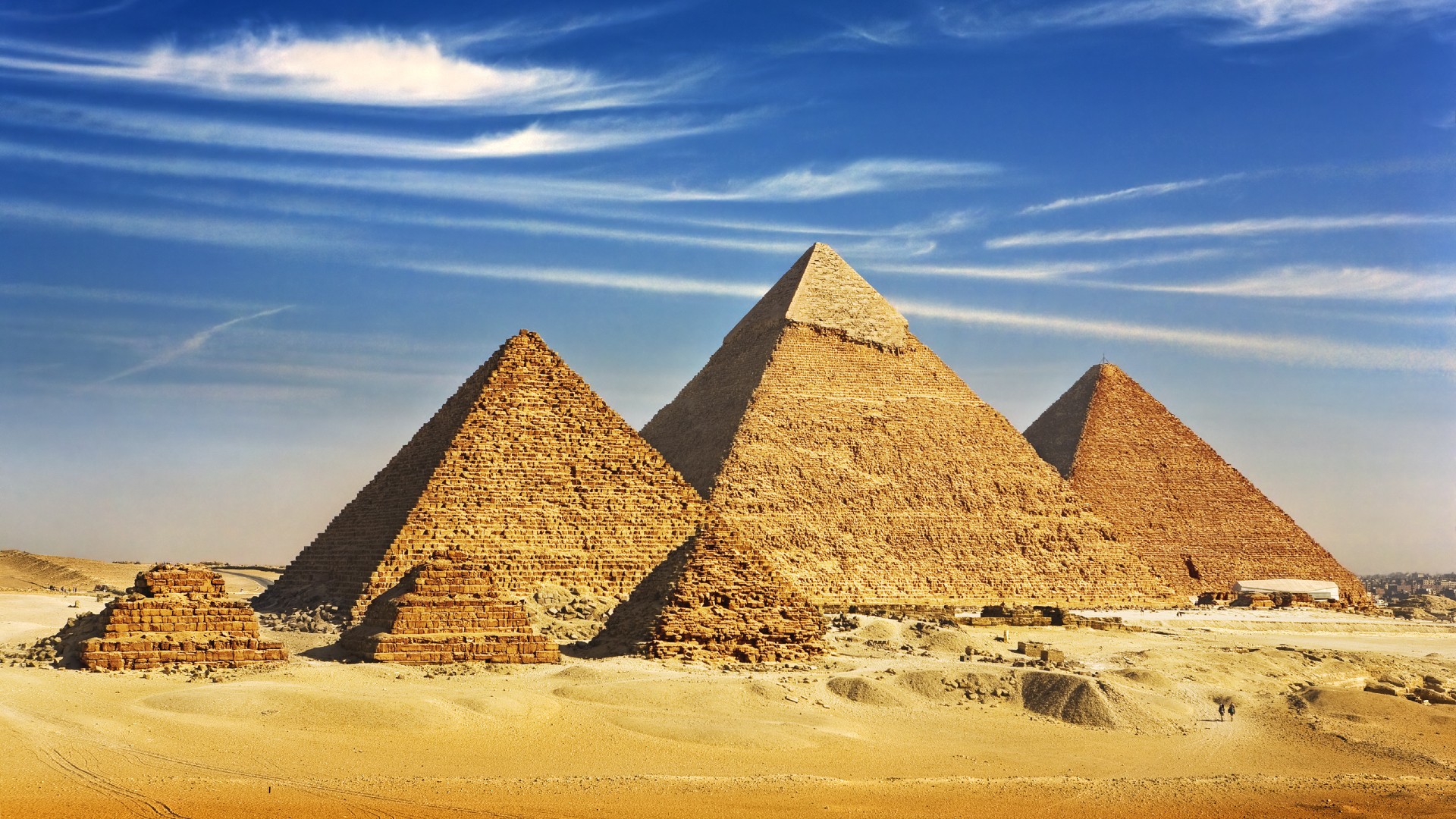
Origins and History
The history of the Pyramids of Giza dates back to the Old Kingdom period of Ancient Egypt, approximately 4,500 years ago. The Giza Pyramids were constructed during the Fourth Dynasty, around 2580-2560 BC. They served as the final resting places for Pharaohs Khufu (Great Pyramid), Khafre (Khafre Pyramid), and Menkaure (Menkaure Pyramid). The precise construction methods remain a subject of debate, but it’s believed that a combination of ramps, levers, and an immense workforce of skilled laborers and slaves was involved.
The Creators
Pharaohs Khufu, Khafre, and Menkaure, the rulers of the Fourth Dynasty, were responsible for commissioning these architectural wonders. Each pyramid is a testament to the power and grandeur of these ancient Egyptian monarchs. The Great Pyramid, attributed to Khufu, stands as the largest and most famous among them, with the original height of approximately 146 meters.
Fascinating Information
The Pyramids of Giza are more than just towering tombs. They are mathematical and engineering marvels. The precise alignment of the pyramids with the cardinal points of the compass is a testament to the ancient Egyptians’ astronomical knowledge. The Great Pyramid, in particular, is known for its precision and complexity, with its inner chambers and passageways.
The Sphinx, that enigmatic guardian of Giza, stands in front of the pyramids, and its connection to the pyramids is a source of intrigue. Some believe it was built by Pharaoh Khafre, while others suggest an earlier date. It’s thought to represent the Pharaoh, combining human intelligence and the strength of a lion.
Over the centuries, these pyramids have weathered the test of time, and they’ve been plundered and explored by countless adventurers and archaeologists. Yet, their mysteries endure. Their significance goes beyond just serving as tombs; they represent the eternal quest for immortality, with the pharaohs’ journey into the afterlife.
The Pyramids of Giza continue to be a source of inspiration, wonder, and fascination for people worldwide. They are a testament to the ingenuity and ambition of the ancient Egyptians, and their towering presence on the Giza Plateau is a reminder of the enduring legacy of this remarkable civilization.
The Rosetta Stone: The Key to Understanding
The Rosetta Stone, an unassuming slab of black basalt, holds a place of immense significance in the realm of deciphering ancient history and language. This unassuming artifact became the key to unlocking the secrets of Egyptian hieroglyphs and understanding the rich tapestry of ancient Egypt’s past.
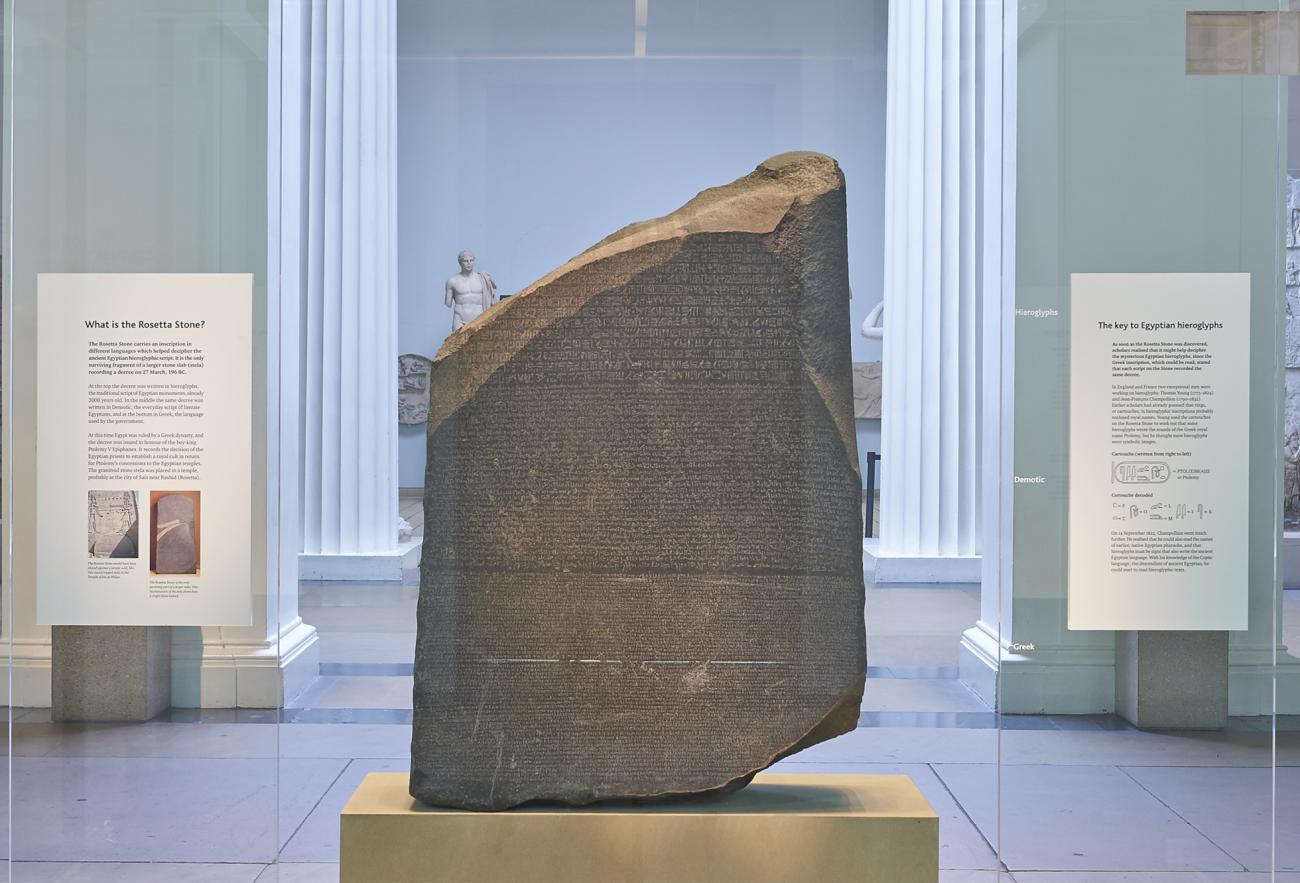
Origins and History
The Rosetta Stone was created during the Ptolemaic period of ancient Egypt, around 196 BC. It was discovered in the town of Rosetta (modern Rashid) on the Mediterranean coast. What makes the Rosetta Stone so extraordinary is that it contains inscriptions in three scripts: Greek, Demotic, and hieroglyphics. This made it the Rosetta Stone crucial in decoding ancient Egyptian hieroglyphs.
The Creator
The stone itself wasn’t created as an artistic masterpiece; it was originally a decree issued by Pharaoh Ptolemy V Epiphanes. The decree was inscribed in these three scripts to ensure that it would be understood by various segments of the Egyptian population, who spoke different languages. This remarkable decree’s primary purpose was to honor the Pharaoh’s deeds and virtues.
Fascinating Information
The significance of the Rosetta Stone became apparent in the early 19th century when French scholar Jean-François Champollion and British scientist Thomas Young independently worked on deciphering hieroglyphs. They used the Greek text on the stone as a reference point to decode the Egyptian scripts.
Champollion’s breakthrough in 1822 marked a milestone in Egyptology. He successfully deciphered the hieroglyphic script and unlocked a treasure trove of knowledge about ancient Egypt’s history, religion, and culture. It was like piecing together a puzzle that had remained unsolved for centuries.
The Rosetta Stone is a tangible link to the past, enabling us to understand the intricacies of a civilization that thrived over 2,000 years ago. It’s now housed in the British Museum in London, where it continues to be a symbol of the human quest for knowledge and our ability to decode the mysteries of history.
The Rosetta Stone remains a testament to the power of language, the persistence of scholars, and the value of understanding our roots. It’s not just a piece of rock; it’s a bridge between the past and the present, helping us unlock the secrets of a civilization that continues to captivate our imagination.
The Book of the Dead: A Guide to the Afterlife
The Book of the Dead, also known as the “Book of Coming Forth by Day,” is one of the most remarkable and mystical texts from ancient Egypt. This ancient funerary text, written on papyrus or linen and often buried with the deceased, serves as a guide to the afterlife, providing intricate details about the journey of the soul through the underworld and into the realm of the gods.
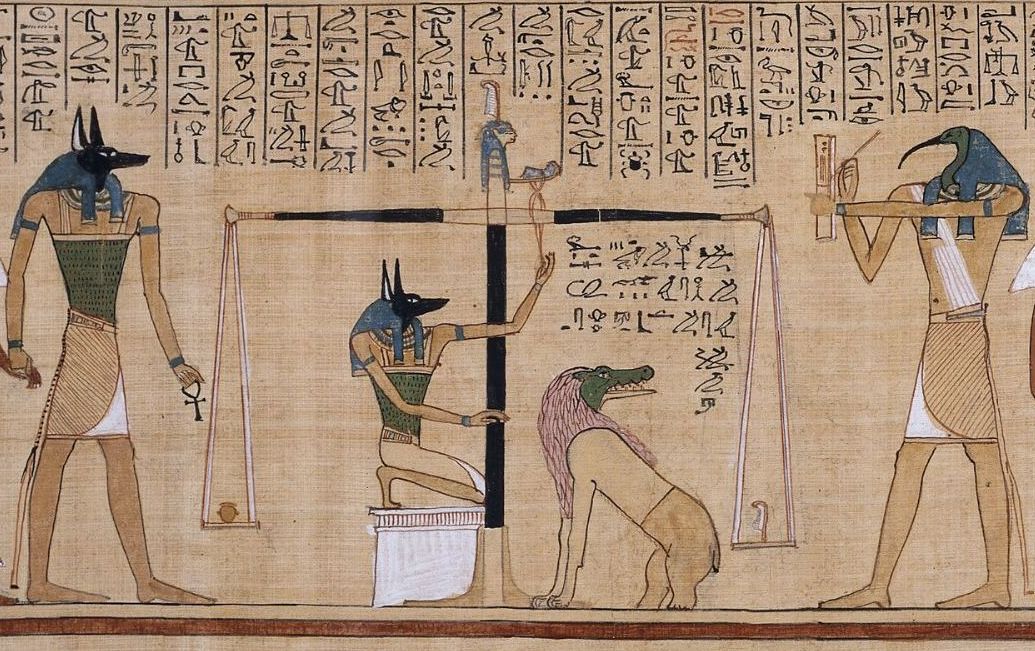
Origins and History
The origins of the Book of the Dead can be traced back to the New Kingdom period of ancient Egypt, around 1550-1070 BC. It evolved from earlier funerary texts and spells, gradually becoming a standardized compilation of knowledge and rituals for the deceased. The book was meant to guide the soul of the departed through the perilous journey of the afterlife and help them overcome various obstacles and trials.
The Creator
There wasn’t a single creator of the Book of the Dead; rather, it was a collective effort by scribes and priests. Different versions of the text existed, tailored to the individual’s social status and beliefs.
Pharaohs and high-ranking officials had elaborately illustrated and personalized versions, while commoners often had simpler versions. These texts were meticulously inscribed with beautiful hieroglyphs and vibrant illustrations to assist the deceased on their journey.
Fascinating Information
The Book of the Dead consists of a collection of spells, prayers, and magical incantations designed to safeguard the deceased and guide them through the trials of the afterlife. It offers instructions on how to navigate the treacherous waters of the underworld, how to avoid the perils of various demons, and how to address the gods and goddesses who would judge the soul.
It’s important to note that the Book of the Dead wasn’t a single book but a collection of texts, and the contents could vary from one version to another. The common theme, however, was the quest for a successful journey to the afterlife.
This ancient text provides us with profound insights into the religious beliefs and spiritual practices of the ancient Egyptians. It emphasizes the importance of life after death and the need for a well-prepared soul to face the challenges of the underworld.
Today, these beautifully illustrated and meticulously written texts continue to be a source of fascination for scholars, historians, and those intrigued by the mysteries of ancient Egypt. The Book of the Dead is a testament to the enduring quest for understanding the mysteries of the afterlife and the human desire to ensure a safe passage into eternity.
The Abydos King List: Recording Egypt’s Rulers
The Abydos King List, an ancient Egyptian artifact of immense historical significance, provides a unique window into the reigns of pharaohs and the dynasties of ancient Egypt. Located in the Temple of Seti I in Abydos, this remarkable inscription, carved into a wall, offers a comprehensive list of the kings who ruled the land of the Nile, recording a significant portion of the country’s rich history.
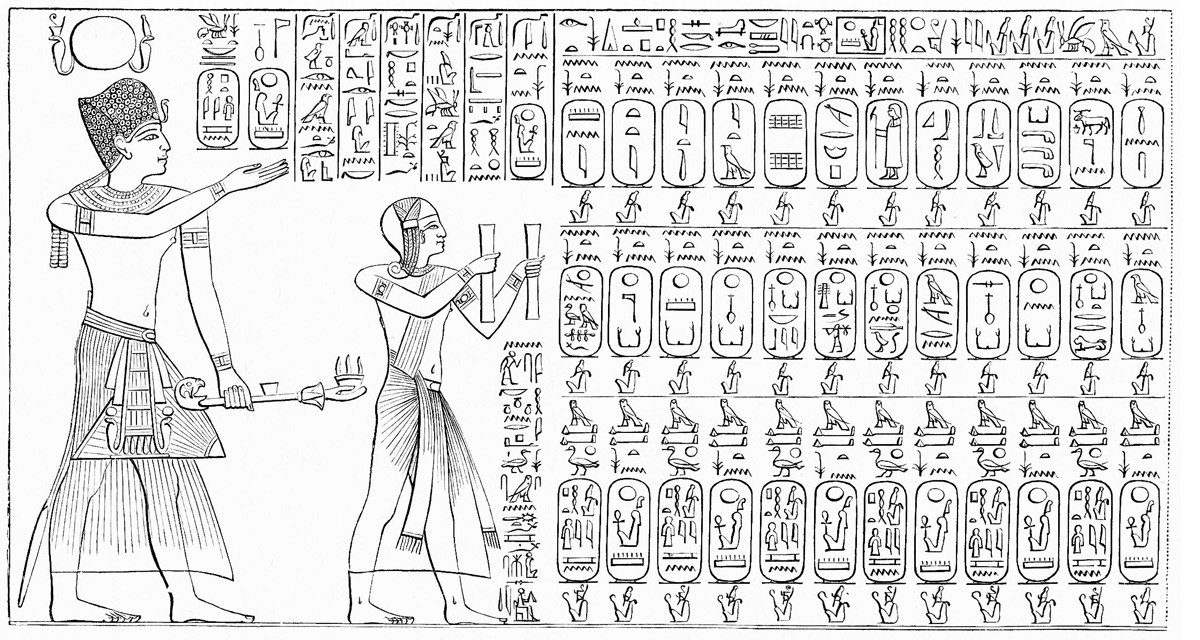
Origins and History
The Abydos King List dates back to the reign of Seti I, who ruled during the 19th Dynasty (c. 1290–1279 BC). It is believed that Seti I commissioned this list to honor his predecessors and to solidify his own legitimacy as a pharaoh. The list itself, however, contains entries that span several dynasties, going as far back as the predynastic period. It’s a unique historical document, almost like a time capsule.
The Creator
Seti I, the creator of the Abydos King List, was a pharaoh known for his impressive military campaigns, temple construction, and his interest in preserving Egypt’s history. Under his rule, the king list was created as a testament to the continuity of kingship in Egypt. The list is carved into the temple’s walls, meticulously inscribed and illustrated.
Fascinating Information
The Abydos King List is invaluable for historians and Egyptologists, as it provides a chronological record of the rulers of Egypt. Notably, it includes the names of several pharaohs whose reigns are not documented elsewhere, shedding light on Egypt’s political history. Each cartouche, an oval enclosure around the pharaoh’s name, is a miniature work of art, displaying the importance of pharaonic names and their link to eternal life.
The list is divided into sub-registers, each containing pharaohs from specific dynasties. This makes it a precious reference tool for understanding the complex succession of pharaohs over the millennia. The list extends to the mythical kings of early Egypt, representing a seamless connection between the divine and the mortal realms.
The Abydos King List stands as a tribute to Egypt’s long history and the meticulous record-keeping of its rulers. Its significance goes beyond a mere historical account; it’s a testament to the continuity and reverence of pharaonic rule, a glimpse into the reverence for tradition in ancient Egypt, and a vital piece of the puzzle in understanding this remarkable civilization.
Amarna Tablets: A Window into Ancient Diplomacy
The Amarna Tablets, a collection of clay tablets inscribed with cuneiform script, offer a remarkable glimpse into the world of diplomacy, intrigue, and international relations during the 14th century BC. These ancient letters, unearthed in the city of Akhetaten (modern-day Amarna) in Egypt, illuminate a period of transition and upheaval in the ancient Near East.
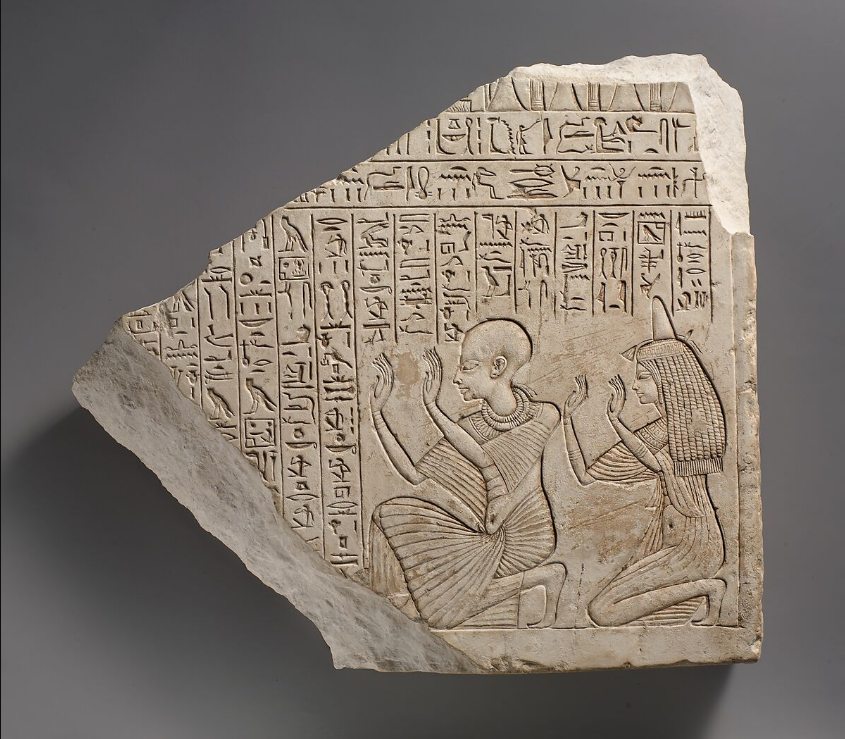
Origins and History
The Amarna Tablets are named after the site where they were discovered, Akhetaten, the capital city established by Pharaoh Akhenaten during the late 18th dynasty. These tablets date back to the reigns of Akhenaten and his successors, particularly Amenhotep III and Akhenaten’s son, the famous King Tutankhamun.
These clay tablets consist of letters, reports, and diplomatic correspondence exchanged between the Egyptian Pharaohs and various foreign rulers and city-states. They provide a unique historical record of international relations during this time, particularly during the tumultuous period of Akhenaten’s religious reforms.
The Creator
The Amarna Tablets weren’t created by a single individual but rather by scribes and diplomats of various ancient Near Eastern powers. The tablets reveal communications between Pharaoh Akhenaten and rulers like Tushratta of Mitanni, Burna-Buriash II of Babylon, and Kadashman-Enlil I of Karaduniash (Kassite Babylonia), among others.
Fascinating Information
The Amarna Tablets are invaluable for historians and archaeologists because they provide insights into political alliances, intrigues, and the power struggles in the ancient Near East. The letters discuss various matters, including marriage alliances, gifts of gold, the exchange of hostages, and even complaints about being betrayed by allies. They shed light on the complex web of diplomacy during this era.
Notably, these tablets reveal Akhenaten’s attempts to establish religious reforms centered on the worship of the sun god Aten. In some letters, he addresses foreign rulers, urging them to adopt his new religion. These texts also reveal the use of the Akkadian language for diplomatic correspondence, showcasing its role as the lingua franca of the ancient world.
The Amarna Tablets offer a tantalizing glimpse into a pivotal period of Egyptian history, marked by religious transformation and shifting international alliances. They continue to captivate scholars and enthusiasts alike, enabling us to reconstruct the complex geopolitical landscape of the ancient Near East during a time of great change.
The Valley of the Kings: Where Pharaohs Rest in Splendor
The Valley of the Kings, situated on the west bank of the Nile near Luxor, is one of Egypt’s most iconic and revered archaeological sites. This extraordinary valley, renowned for its labyrinthine tombs, served as the final resting place for many of Egypt’s most powerful pharaohs. Let’s delve into the intriguing history and significance of this awe-inspiring necropolis.
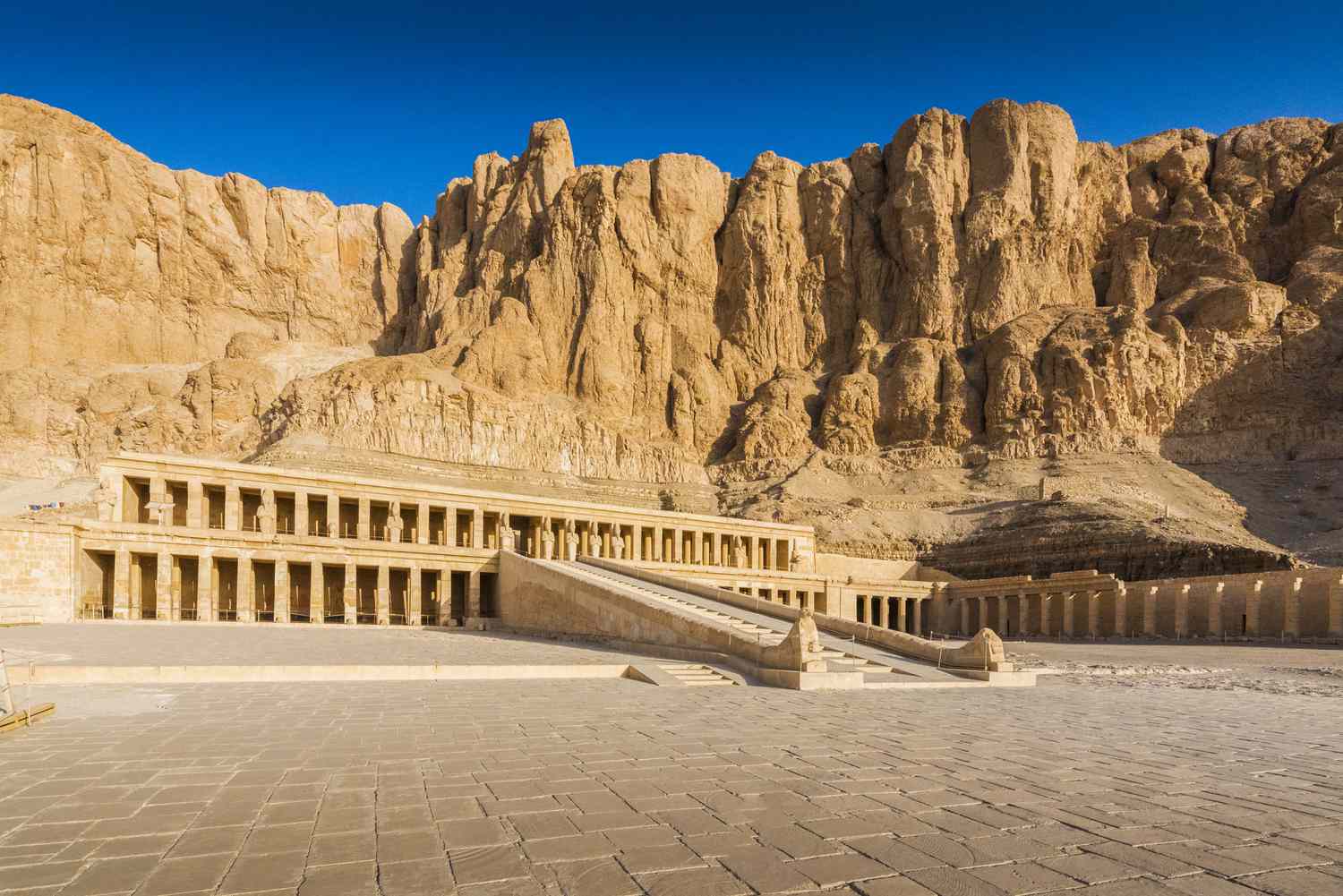
Origins and History
The Valley of the Kings was used as a burial ground during the New Kingdom period, which spanned from approximately the 16th to the 11th century BC. The valley was strategically chosen for its natural protection and concealment within the rocky cliffs, making it an ideal location to safeguard the pharaohs’ tombs from grave robbers.
The valley’s use as a royal burial site began with the reign of Thutmose I but is most commonly associated with Pharaoh Seti I, who initiated the systematic excavation of the area. Notable tombs in the valley include those of Tutankhamun, Ramses II, and countless others, many of which remain well-preserved today.
The Creators
The creation of the tombs was a monumental undertaking involving skilled architects, artisans, and laborers. Pharaohs would appoint chief architects to design and oversee the construction of their tombs, ensuring they were grand and well-protected. The elaborate decoration inside these tombs was the work of talented artists who painted intricate scenes from the pharaoh’s life and their journey into the afterlife.
Fascinating Information
The Valley of the Kings contains more than 60 royal tombs, each uniquely designed and decorated to reflect the individual pharaoh’s legacy and beliefs. The tombs consist of long corridors, burial chambers, and storerooms filled with treasures and funerary objects, all designed to accompany the pharaoh into the afterlife.
One of the most famous discoveries in the valley was the tomb of Tutankhamun, uncovered by Howard Carter in 1922. This incredible find offered an unparalleled glimpse into the riches and customs of ancient Egypt. Many other tombs in the valley have also yielded significant archaeological treasures.
The intricate wall paintings and hieroglyphs inside these tombs narrate the pharaoh’s journey through the underworld, with the hope of reaching the realm of the gods. The valley’s significance goes beyond being a burial ground; it’s a representation of the Egyptian belief in the afterlife, the importance of preserving the pharaoh’s legacy, and the dedication to ensuring a safe passage into eternity.
Today, the Valley of the Kings continues to draw visitors from around the world who seek to explore the secrets of Egypt’s royal past and marvel at the architectural and artistic achievements of this ancient civilization. It remains a testament to the enduring fascination with Egypt’s rich history and the legacy of its pharaohs.
The Beautiful Nefertiti Bust: A Glimpse of Ancient Elegance
The Nefertiti Bust, a masterpiece of ancient Egyptian art, is a captivating representation of beauty, elegance, and regal grace. This iconic sculpture has captured the world’s imagination and stands as a symbol of the artistry and culture of ancient Egypt.
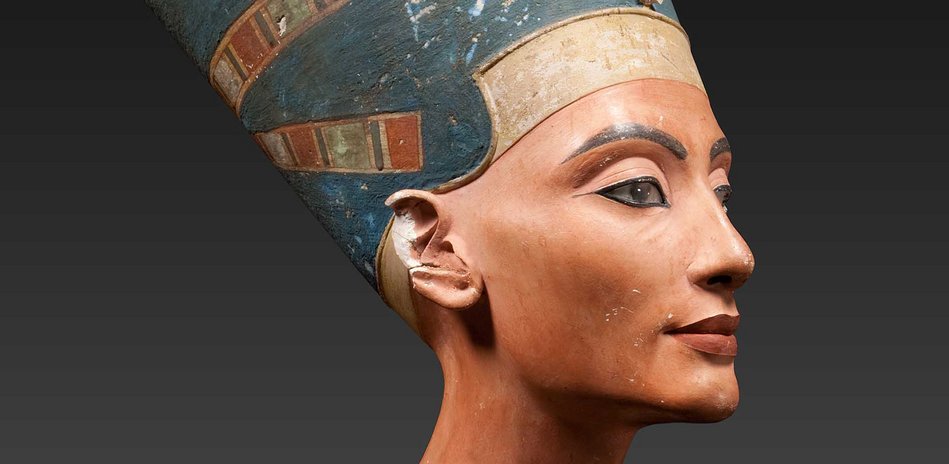
Origins and History
The Nefertiti Bust is believed to have been created during the reign of Pharaoh Akhenaten and Queen Nefertiti, around 1345 BC. It was discovered in 1912 by German archaeologist Ludwig Borchardt at Amarna, the ancient capital of Akhenaten’s short-lived religious revolution. This limestone sculpture, with its lifelike portrayal of Queen Nefertiti, is considered one of the most significant artistic achievements of the Amarna Period.
The Creator
The sculptor behind the Nefertiti Bust remains unknown, but it’s widely believed that it was crafted during the period when Akhenaten’s court moved to Amarna. Nefertiti was not only the queen but also a significant figure in Akhenaten’s religious and political reforms. The bust might have been commissioned to emphasize her role and beauty.
Fascinating Information
The Nefertiti Bust is renowned for its exquisite craftsmanship and the lifelike portrayal of the queen. It’s sculpted from limestone and is approximately 20 inches in height. What’s particularly striking is the fine detail and precision in depicting Nefertiti’s facial features, her high cheekbones, and the graceful curve of her neck.
The sculpture’s stunningly detailed and realistic portrayal of Nefertiti challenges the conventional artistic styles of the time. The bust is adorned with a blue crown and a golden necklace, further emphasizing her royal status.
Nefertiti’s name means “the beautiful one has come,” and the bust certainly lives up to her name. It’s not only an artistic masterpiece but also a historical artifact that provides insight into the aesthetics and cultural values of the Amarna Period. It’s thought that the bust might have been used as a model for artists and a representation of Nefertiti in her absence.
Today, the Nefertiti Bust is displayed at the Neues Museum in Berlin, where it continues to captivate and inspire art enthusiasts and historians. It’s a timeless testament to the enduring allure of ancient Egypt and the everlasting appeal of Queen Nefertiti, the woman who continues to be celebrated for her beauty and influence.
Tutankhamun’s Treasures: A Pharaoh’s Legacy
The treasures of King Tutankhamun, or Tutankhamun’s treasures, are a collection of priceless artifacts that provide a rare and stunning insight into the world of ancient Egypt. Discovered in the tomb of the young pharaoh Tutankhamun in 1922, these treasures have captured the imaginations of people worldwide, offering a glimpse into the opulence and artistry of the New Kingdom era.
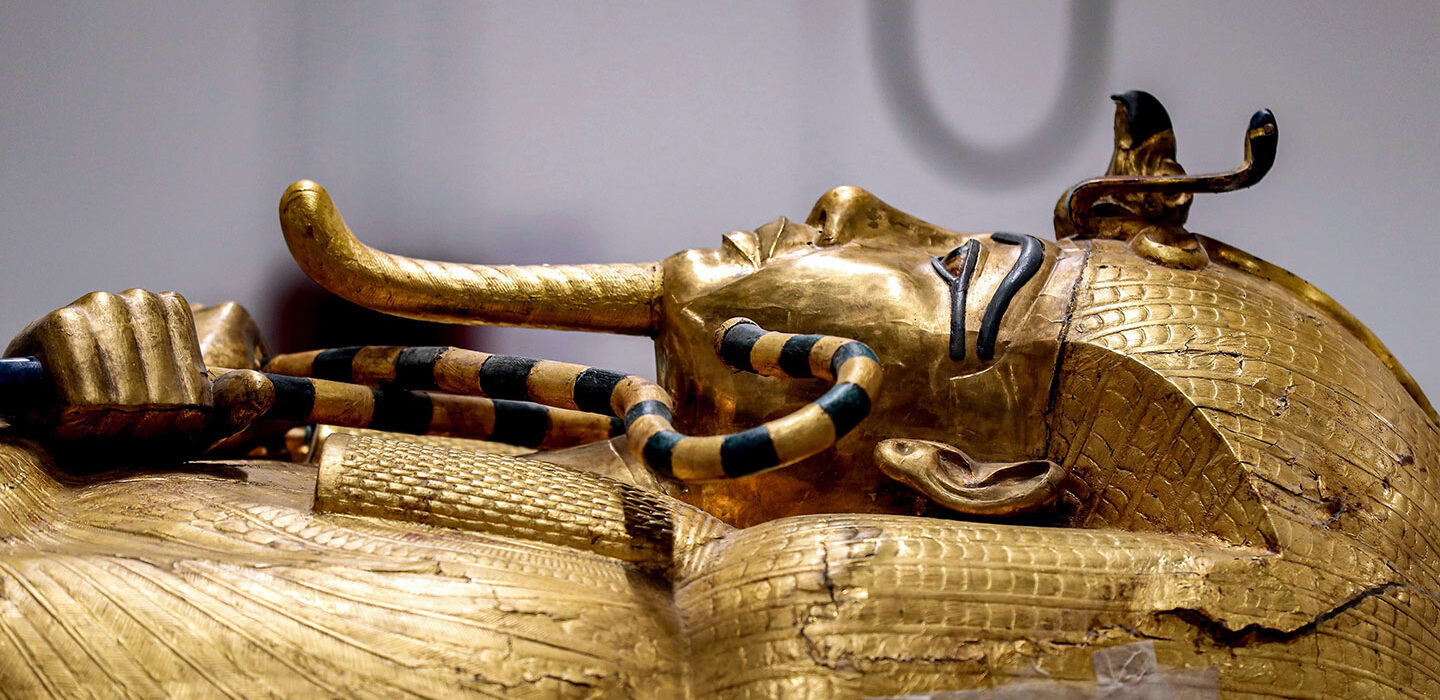
Origins and History
The story of Tutankhamun’s treasures begins with the young pharaoh’s reign during the 18th Dynasty of Egypt, around 1332-1323 BC. Tutankhamun ascended to the throne at a young age, and his relatively short rule saw the reversal of the religious reforms initiated by his predecessor, Akhenaten. When Tutankhamun died at around 18 or 19 years old, he was buried in the Valley of the Kings.
The treasures remained hidden for over 3,000 years until British archaeologist Howard Carter made one of the most famous archaeological discoveries in history, unearthing the tomb in 1922. The tomb, remarkably intact and filled with over 5,000 items, offered an unprecedented glimpse into the life and afterlife beliefs of the ancient Egyptians.
The Creators
Tutankhamun’s treasures were created by a team of skilled artisans, craftsmen, and artists during the pharaoh’s lifetime and in preparation for his journey to the afterlife. These craftsmen would have included skilled sculptors, jewelers, and painters, who produced intricate works of art using the finest materials available at the time.
Fascinating Information
Tutankhamun’s treasures encompass a vast array of artifacts, from intricately crafted jewelry to stunning funerary masks and statues. The most iconic item among the treasures is the golden death mask of Tutankhamun, which is regarded as one of the most exquisite pieces of art from the ancient world. The mask, made of solid gold, was placed directly on the pharaoh’s mummy to ensure his protection in the afterlife.
Other notable items include golden thrones, chariots, intricate canopic jars, and alabaster vessels. These treasures provide insights into the beliefs and practices of the time, such as the importance of life after death and the desire to ensure a comfortable existence in the afterlife.
Today, many of these treasures are displayed in the Egyptian Museum in Cairo, while others travel the world as part of exhibitions. They continue to captivate people’s imaginations, serving as a testament to the craftsmanship, artistry, and opulence of ancient Egypt and the enduring legacy of the boy king Tutankhamun.
Temple of Karnak: A Monument to the Divine
The Temple of Karnak, a sprawling complex of temples and chapels located in Luxor, Egypt, is a testament to the grandeur, devotion, and architectural prowess of ancient Egypt. This vast temple complex, dedicated to the gods, is one of the most significant religious structures of the ancient world.
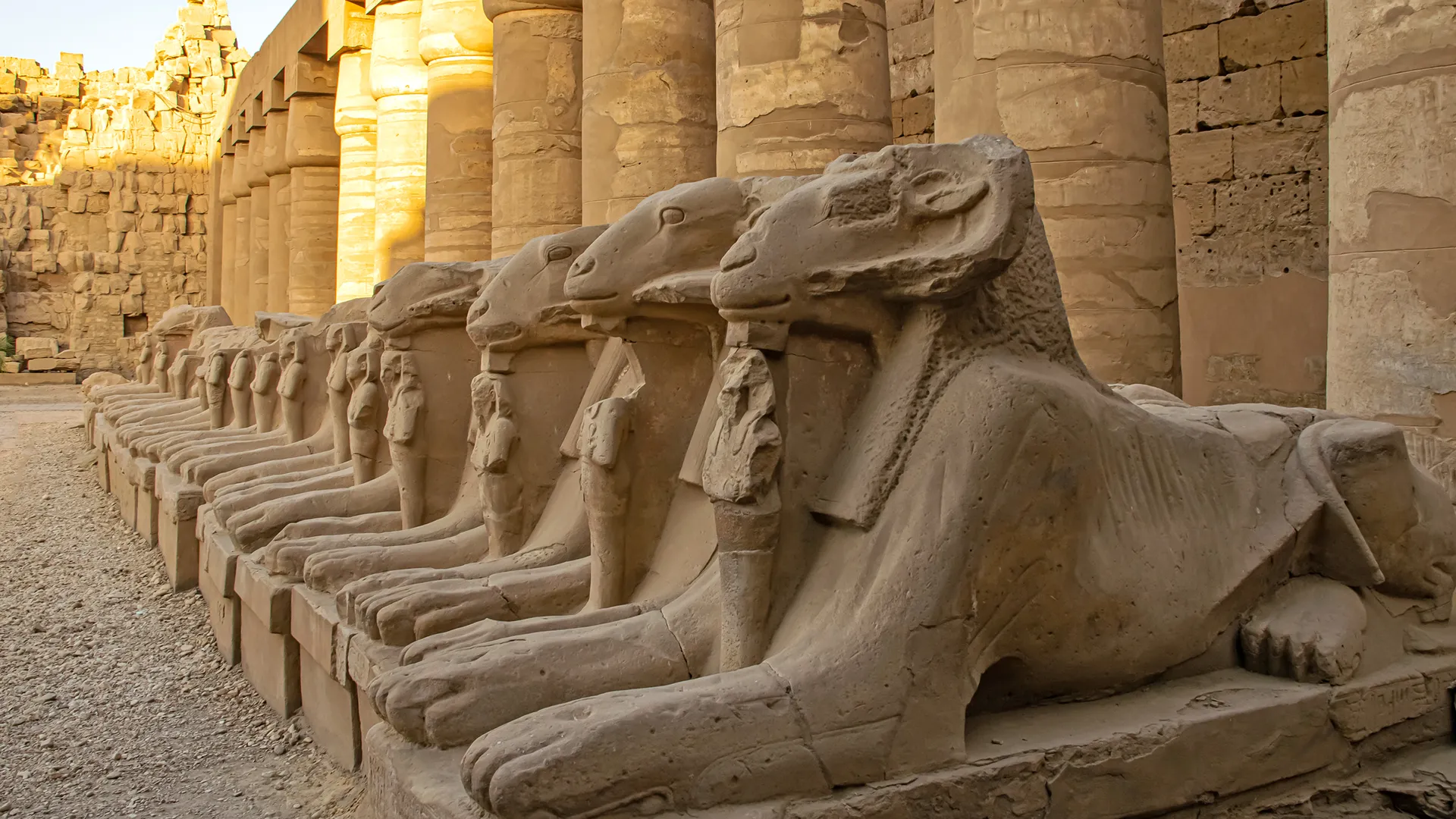
Origins and History
The Temple of Karnak’s history stretches back over 2,000 years, with construction beginning during the Middle Kingdom period around 2055 BC. However, it saw its most significant expansions and renovations during the New Kingdom era, particularly under the reign of pharaohs like Amenhotep III, Tutankhamun, and Ramesses II. The complex served as a place of worship for the god Amun, considered one of the most important deities in the Egyptian pantheon.
The Creator
The vast complex of the Karnak Temple was not the creation of a single individual but rather a collective effort spanning several generations of pharaohs, architects, and skilled laborers. Each ruler sought to add their mark to the temple, expanding and enhancing it with new structures, courtyards, and statues, all dedicated to Amun and other deities.
Fascinating Information
The Temple of Karnak is a remarkable testament to the artistry and engineering skills of the ancient Egyptians. It encompasses a vast area, with its most iconic features being the Great Hypostyle Hall, a colossal forest of massive columns, and the Karnak Open Air Museum, which houses a wealth of statues and artifacts.
The complex was not merely a temple but a thriving religious city, complete with priests’ quarters, workshops, and administrative buildings. It hosted grand festivals, ceremonies, and religious processions. The avenue of ram-headed sphinxes that once connected Karnak with Luxor Temple, over 1.5 miles away, is a magnificent example of ancient Egyptian grandeur.
The Karnak Temple is also significant for its ongoing excavation and restoration efforts. It’s a living testament to the enduring fascination and dedication of modern archaeologists and Egyptologists.
Today, the Temple of Karnak stands as a testament to the enduring legacy of ancient Egypt. It continues to captivate visitors, offering a window into the ancient Egyptian’s religious fervor, architectural prowess, and the profound significance of Amun in their lives. It’s not just a monument but a living testament to a civilization that left an indelible mark on the world.
The Sacred Eye of Horus: A Symbol of Protection and Healing
The Eye of Horus, also known as the Wedjat or Udjat eye, is one of the most enduring and recognizable symbols in ancient Egyptian iconography. This powerful and sacred emblem represents protection, healing, and the benevolent watchfulness of the sky god Horus.
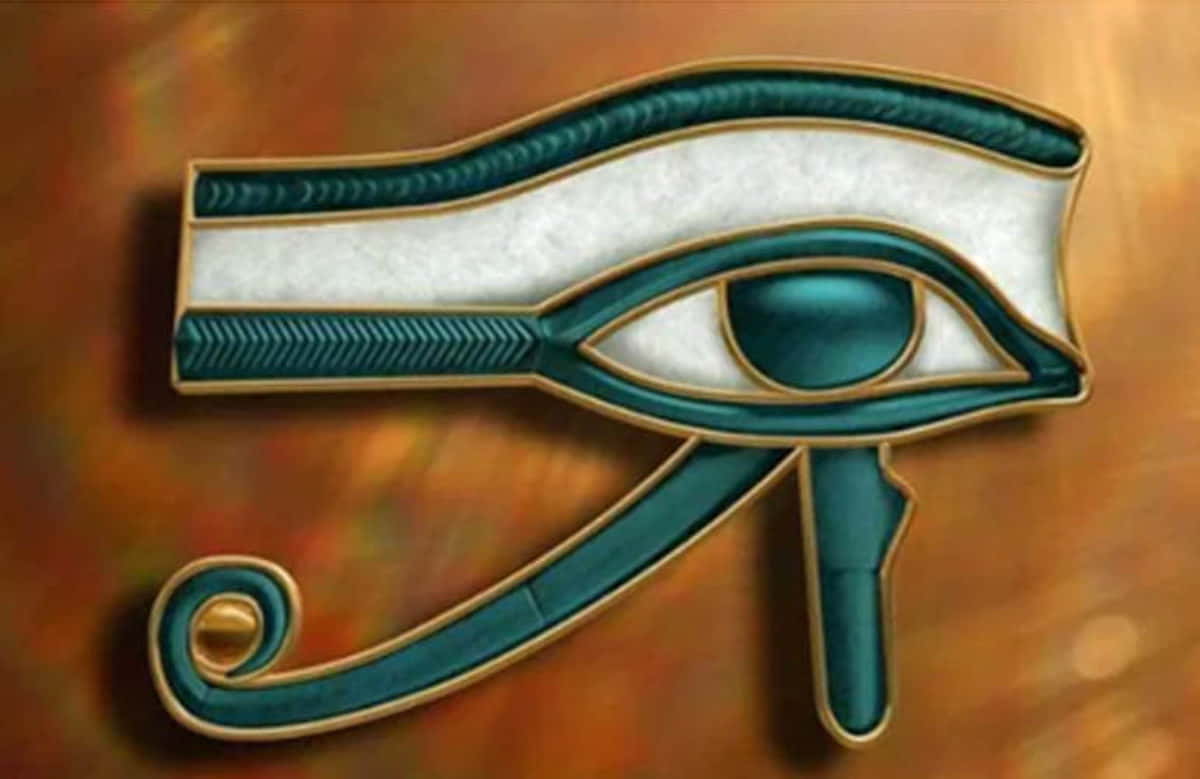
Origins and History
The origins of the Eye of Horus date back to ancient Egypt, with its use spanning over 4,000 years. The eye’s symbolism is intertwined with Egyptian mythology and religious beliefs. The eye is associated with Horus, the god of the sky and divine kingship, who was often depicted with the head of a falcon.
According to Egyptian mythology, the Eye of Horus has a complex origin story. It is said to have been damaged in a battle with the god Seth, who represented chaos and disorder. Thoth, the god of wisdom and writing, healed the eye and restored it to wholeness. The eye, thus made whole, symbolizes healing and protection.
The Creator
The Eye of Horus, as a symbol, wasn’t created by a specific individual but rather evolved over time through Egyptian religious and cultural beliefs. It was commonly used in art, jewelry, and religious ceremonies, reflecting the profound significance of Horus and the protective nature of the eye.
Fascinating Information
The Eye of Horus is a powerful symbol with distinct parts that have specific meanings. The right eye represents the sun and is associated with the god Ra. The left eye symbolizes the moon and is associated with the goddess Hathor. The eyebrow is a representation of the falcon’s wing, and the teardrop beneath the eye stands for the sense of taste.
The Eye of Horus was not only a symbol but also a potent protective amulet. It was believed to safeguard the wearer from harm and to ensure their well-being. This eye also played a crucial role in the process of mummification, as it was associated with healing and resurrection.
The ancient Egyptians believed that the Eye of Horus had the power to ward off evil and provide divine protection. It has left an enduring legacy, with its use and symbolism persisting through millennia. Today, it is still regarded as a potent symbol of protection, healing, and the enduring spiritual traditions of ancient Egypt.
The Colossi of Memnon: Sentinels of Ancient Thebes
The Colossi of Memnon, two colossal statues standing in the Theban necropolis on the west bank of the Nile in Luxor, Egypt, are a testament to the grandeur and significance of ancient Egyptian monuments. These imposing statues, representing Pharaoh Amenhotep III, have fascinated travelers and historians for centuries.

Origins and History
The Colossi of Memnon were constructed during the reign of Pharaoh Amenhotep III, one of the most powerful and prosperous pharaohs of the 18th Dynasty, around 1350 BC. These massive statues once guarded the entrance to Amenhotep III’s mortuary temple, which, at its peak, was the largest and most opulent temple in ancient Egypt. The statues were carved from single blocks of sandstone and originally measured about 20 meters (66 feet) in height.
Over time, the temple and its grandeur fell into disrepair, with many of its stones repurposed for other construction projects. However, the Colossi of Memnon remained standing.
The Creator
The exact identity of the sculptors who created the Colossi of Memnon is not known, but they were likely skilled artisans and craftsmen from the period of Pharaoh Amenhotep III.
Fascinating Information
The Colossi of Memnon derive their name from the ancient Greek hero Memnon, who was believed to have participated in the Trojan War. Greek and Roman tourists who visited the site in antiquity believed that the statues made musical sounds at dawn.
This phenomenon was likely caused by rising temperatures, which caused the stone to expand and contract, producing the sounds. In 27 BC, an earthquake damaged the northern colossus, and it began to produce these “singing” sounds. The phenomenon attracted many visitors, including famous figures like Emperor Hadrian, who left an inscription on the statue.
The Colossi of Memnon stand as iconic symbols of ancient Egyptian grandeur and resilience. While they no longer guard the entrance to a temple, they serve as a reminder of the artistic and architectural achievements of the New Kingdom period. Their presence continues to captivate travelers, offering a glimpse into the majesty and wonder of the ancient world.
The Serapeum of Saqqara: A Monument to Sacred Apis Bulls
The Serapeum of Saqqara, an enigmatic subterranean complex located in the necropolis of Saqqara near Memphis, Egypt, is a remarkable testament to the veneration of the sacred Apis bulls. This underground burial site, with its massive granite sarcophagi, provides a unique glimpse into the religious practices of ancient Egypt.
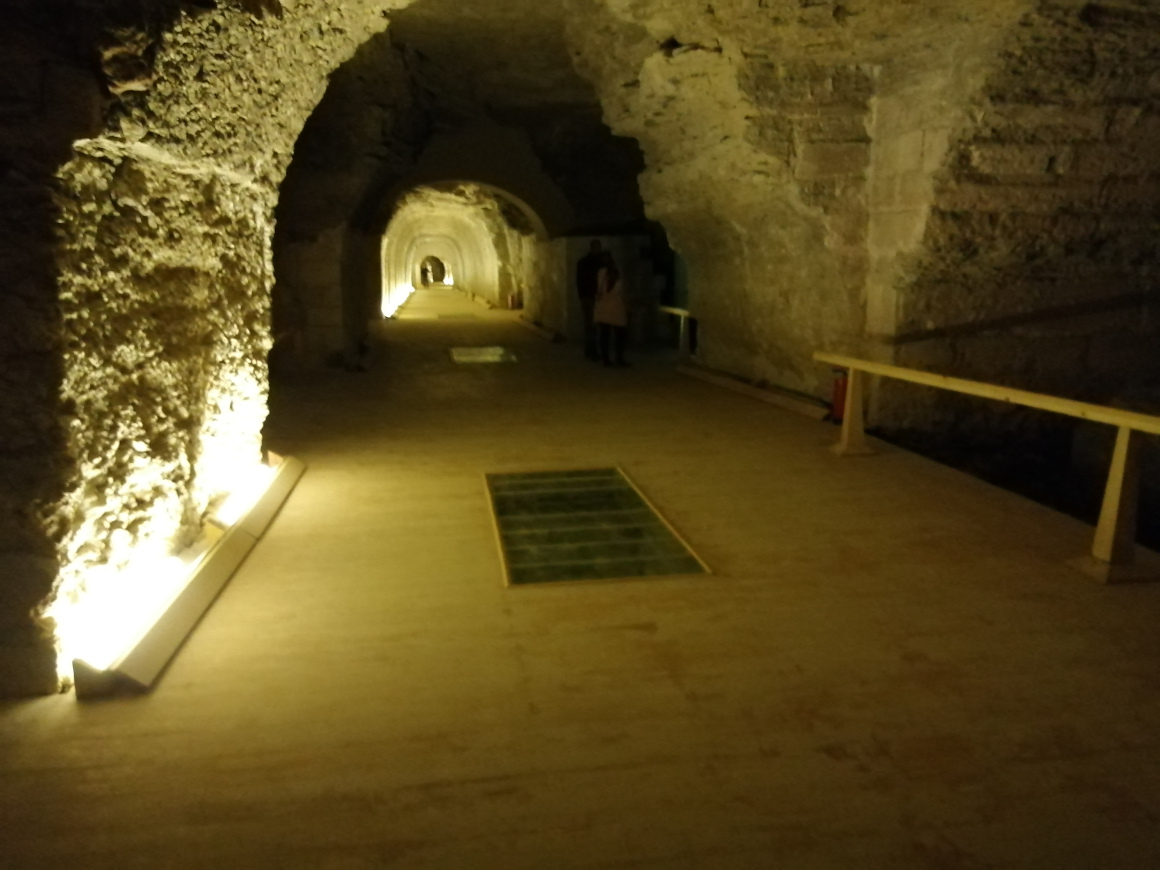
Origins and History
The origins of the Serapeum date back to the New Kingdom period of ancient Egypt, around 1400 BC, during the reign of Pharaoh Amenhotep III. The complex was dedicated to the Apis bull, a deity associated with fertility and the sun god Ptah. Apis was believed to be a living god, and when one bull died, another was carefully selected to take its place.
The Serapeum served as the burial place for these revered Apis bulls, who were treated with the utmost care and reverence during their lives and in death. The catacombs at Saqqara contain a series of underground tunnels and chambers with massive, precision-carved granite sarcophagi to house these sacred animals.
The Creator
The Serapeum of Saqqara was created by Pharaohs from various dynasties, particularly during the New Kingdom. It was a testament to their devotion to the cult of Apis and the importance they attached to the preservation of the sacred bulls.
Fascinating Information
The Serapeum is known for its immense sarcophagi, each weighing many tons. These sarcophagi were meticulously crafted from a single block of Aswan granite, a testament to the remarkable craftsmanship of the ancient Egyptians. Each sarcophagus was designed to house the mummified remains of the Apis bull, allowing the bull to journey into the afterlife.
The Apis bulls held a special place in Egyptian religion and were believed to be the earthly embodiment of the god Ptah. Their births, markings, and behavior were carefully observed for signs of divinity. When an Apis bull died, it was mummified and interred within the Serapeum to rest eternally.
The catacombs of the Serapeum contain multiple burial chambers, reflecting the importance and continuity of the Apis cult over centuries.
Today, the Serapeum of Saqqara stands as a testament to the unique religious beliefs and practices of ancient Egypt. It offers a rare glimpse into the reverence and rituals surrounding the Apis bulls, which played a significant role in the spiritual and cultural tapestry of this remarkable civilization.
The Sacred Scarab Beetle: Symbol of Renewal and Protection
The scarab beetle, or Scarabaeus sacer, is an enduring symbol in ancient Egyptian culture, known for its representation of rebirth, transformation, and protection. This remarkable insect, often associated with the sun god Ra, played a central role in Egyptian mythology and daily life.
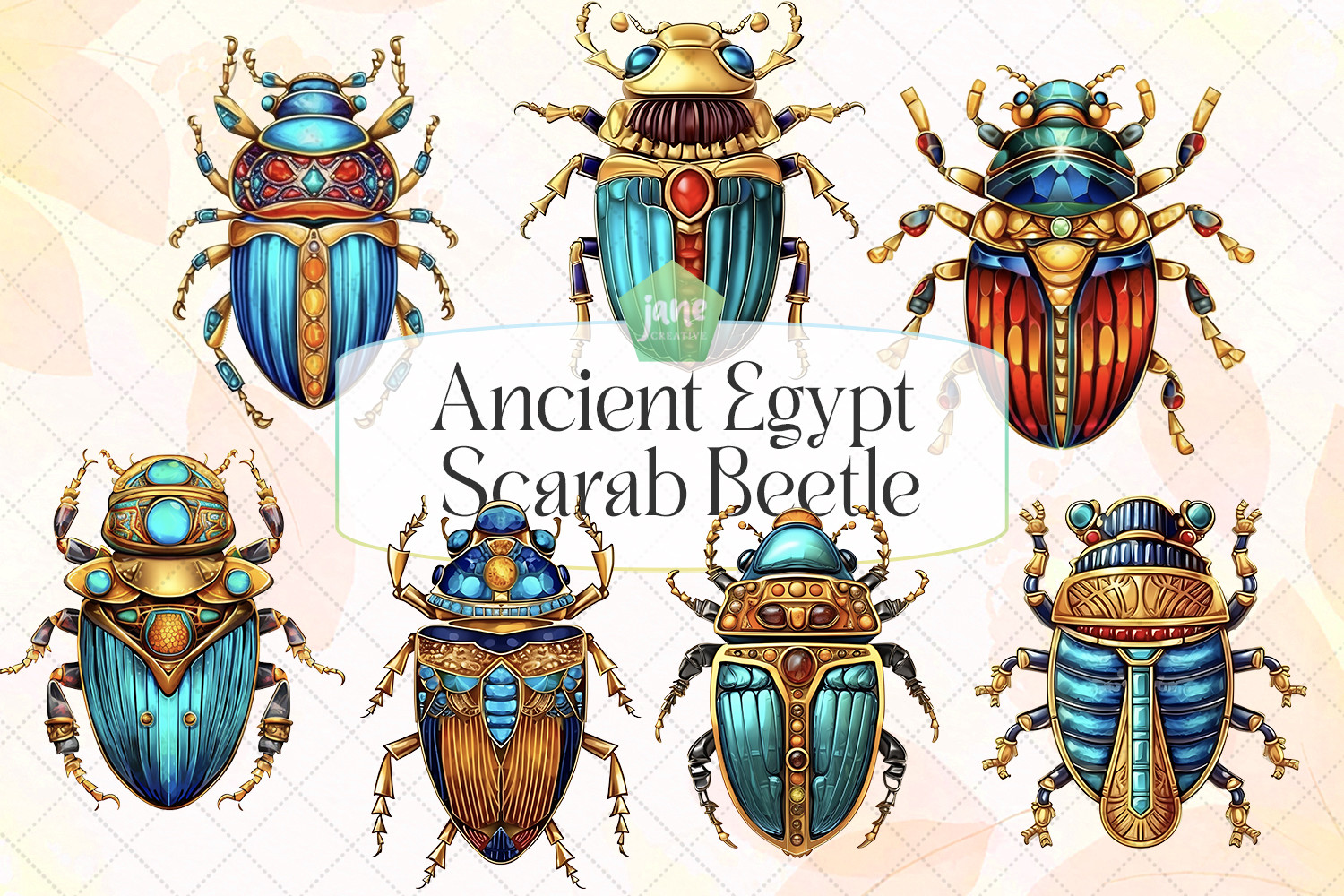
Origins and History
The scarab beetle has deep roots in ancient Egyptian history, dating back to at least the Old Kingdom period (circa 2686-2181 BC). The word “scarab” itself is derived from the Greek word “scarabeus,” which means “to roll.” This name is quite fitting, as the dung beetle, a variety of scarab, was seen rolling balls of dung across the desert, mirroring the sun’s journey across the sky.
The dung beetle’s laborious task of rolling dung balls was symbolically connected to the sun’s daily journey across the heavens, which the ancient Egyptians believed to be a representation of the sun god Ra’s daily voyage.
The Creator
The reverence for the scarab beetle was widespread among the ancient Egyptians and was not attributed to a single creator or individual. It was a symbol deeply embedded in their religious and cultural beliefs.
Fascinating Information
The scarab beetle was associated with a wide range of positive attributes, making it a popular symbol in ancient Egypt. It represented rebirth and regeneration because of the beetle’s habit of laying its eggs in dung, which served as food for the hatching larvae. This natural process was seen as a symbol of life’s renewal and transformation.
The scarab beetle was also considered a powerful protective amulet. Egyptians believed that it could ward off evil and misfortune. Scarabs were often used as seals, jewelry, or amulets that the living and the deceased would wear to ensure their safety and guidance on their journey through life and the afterlife.
Perhaps the most famous scarab artifact is the Heart Scarab, which was placed on the chest of the deceased during mummification to ensure their heart would speak truth in the judgment hall of the god Osiris.
Today, the scarab beetle’s symbolism continues to capture the fascination of people around the world. It serves as a testament to the enduring allure of ancient Egypt and the profound symbolism attached to even the smallest creatures in its culture.
Sphinx Stela: A Monument to Egyptian Royalty
The Sphinx Stela, also known as the Dream Stela, is a remarkable monument that stands as both a historical record and an homage to the Great Sphinx of Giza, one of the most iconic symbols of ancient Egypt. This inscribed stone tablet offers valuable insights into the monument’s history and its connection to Pharaoh Thutmose IV.
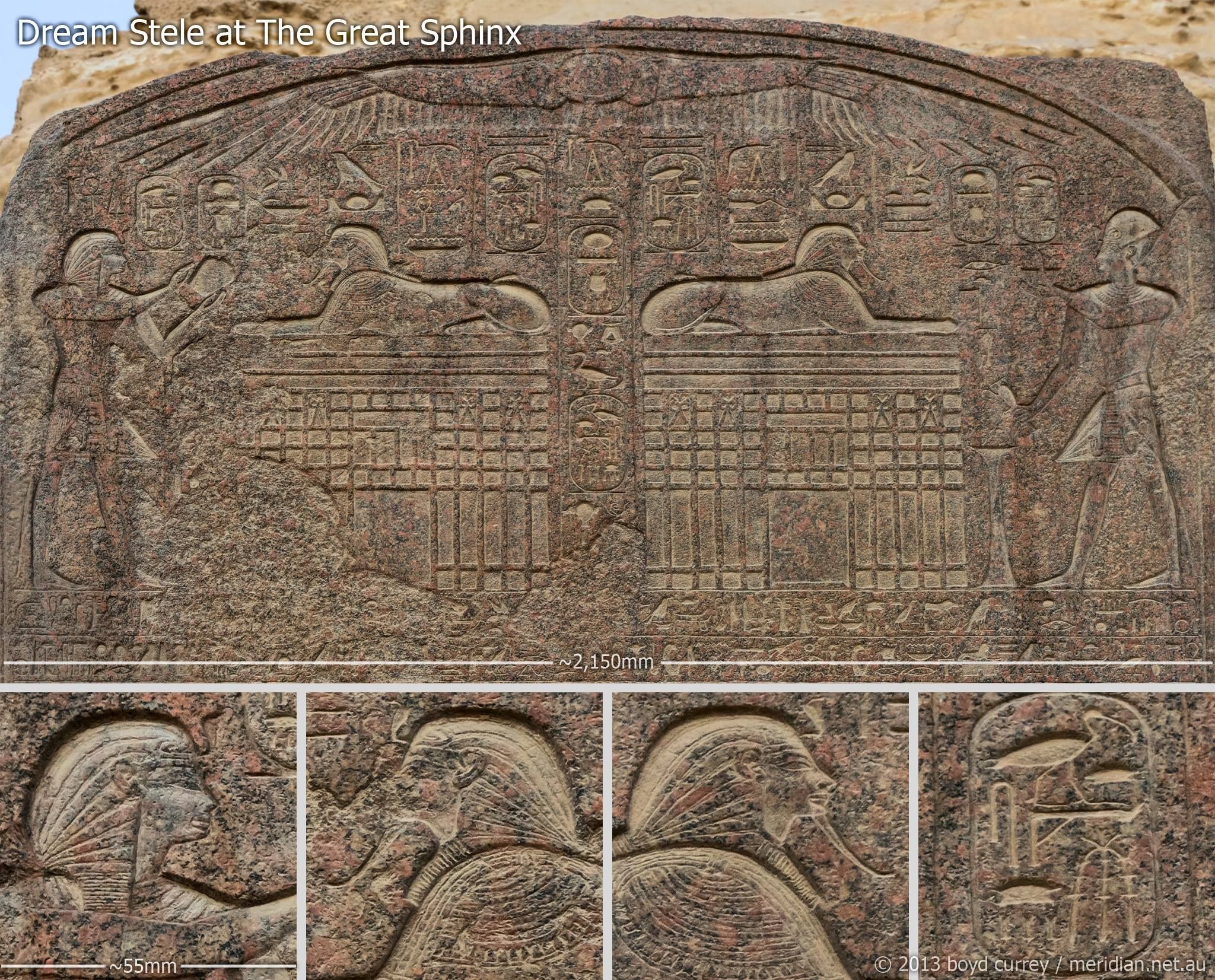
Origins and History
The Sphinx Stela is believed to date back to the 18th Dynasty of ancient Egypt, around 1400 BC, during the reign of Pharaoh Thutmose IV. The story behind this stela is both fascinating and somewhat legendary. According to the inscriptions on the stela, Thutmose IV, as a young prince, fell asleep in the shadow of the Great Sphinx, which had been buried in the sands of the desert.
In his dream, the Sphinx spoke to the young prince, promising that if Thutmose IV cleared the sand and restored the monument, he would be granted the kingship of Egypt. The dream came to pass, and Thutmose IV became the pharaoh, attributing his rise to power to the Great Sphinx.
The Creator
The Sphinx Stela was created during the reign of Thutmose IV, likely commissioned to commemorate the pharaoh’s dream and his subsequent efforts to uncover and restore the Great Sphinx. The artisans and scribes of the time would have been responsible for crafting this important monument.
Fascinating Information
The Sphinx Stela provides a significant historical record, both of the dream Thutmose IV experienced and his efforts to excavate and restore the Great Sphinx. It sheds light on the importance of the Sphinx in ancient Egyptian religion and politics.
The stela not only documents the dream but also serves as an official decree by Pharaoh Thutmose IV, granting support and funding for the restoration of the Sphinx. This act reaffirmed the Sphinx’s significance as a powerful symbol of the pharaoh’s authority and a connection to the divine.
Today, the Sphinx Stela can be found between the paws of the Great Sphinx, where it has rested for thousands of years. It is a testament to the enduring legacy of the Great Sphinx, the devotion of the ancient Egyptians to their monuments, and the significance of the pharaohs in Egyptian history. It continues to captivate visitors, offering a glimpse into the intersection of dreams, legends, and reality in ancient Egypt.
The Colonnade at Luxor Temple: A Walkway to Ancient Majesty
The Colonnade at Luxor Temple, situated on the east bank of the Nile in Luxor, Egypt, is a grand avenue of towering columns that once served as a ceremonial pathway connecting the entrance to the temple with the Temple of Karnak. This awe-inspiring architectural marvel stands as a testament to the grandeur and significance of ancient Egyptian temples.
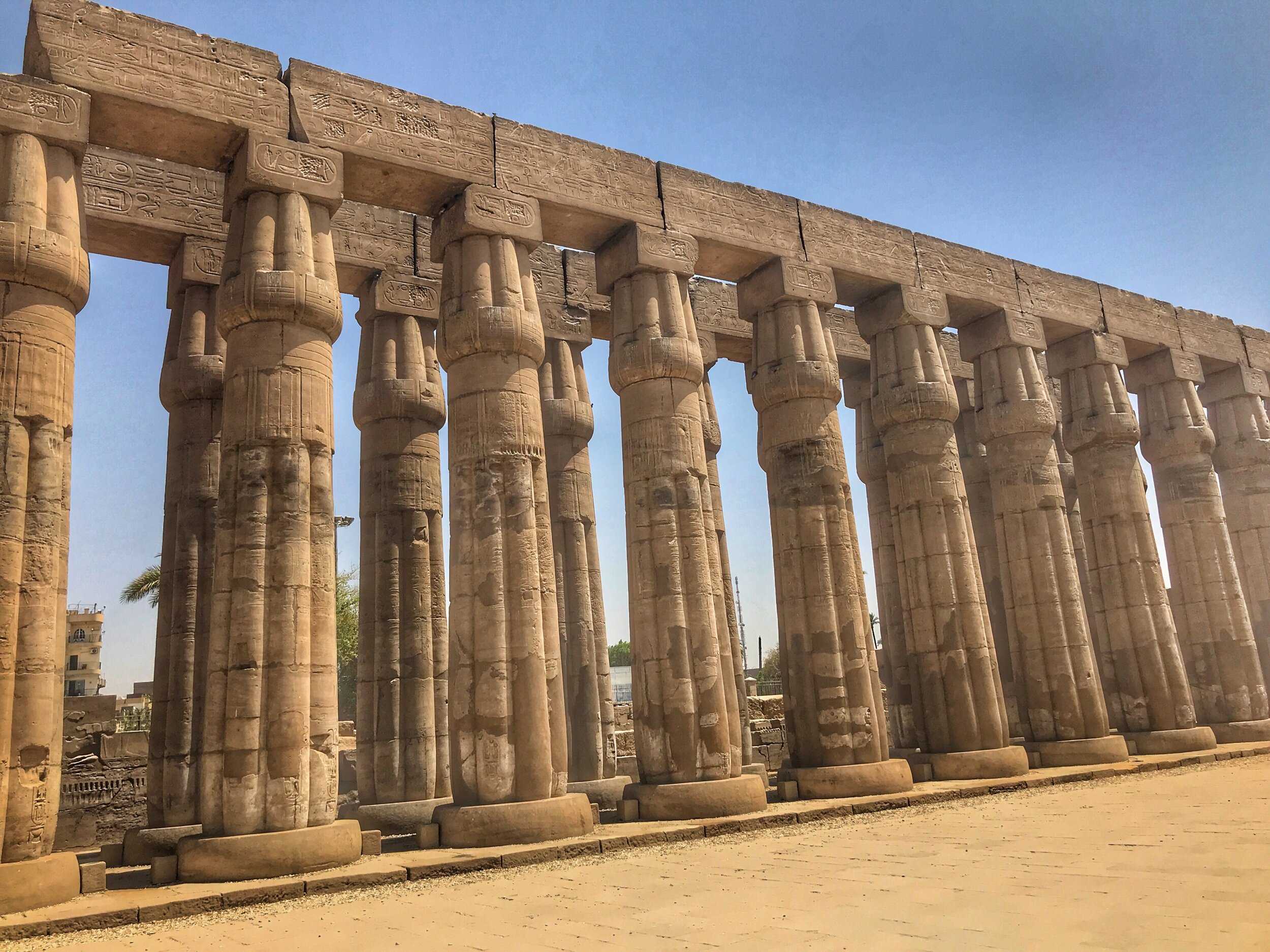
Origins and History
The Colonnade at Luxor Temple is part of the larger Luxor Temple complex, which dates back to the New Kingdom period, around 1400 BC. It was initially built by Pharaoh Amenhotep III and was expanded upon by later pharaohs, including Tutankhamun, Horemheb, and Ramses II. The Colonnade itself was constructed during the reign of Amenhotep III, who dedicated it to the god Amun.
The grand avenue was once lined with Sphinxes, connecting the Luxor Temple with the larger Temple of Karnak, creating a ceremonial path for religious processions and festivities. It served as a significant route for religious and cultural activities in ancient Thebes, now modern-day Luxor.
The Creator
The creation of the Colonnade at Luxor Temple was undertaken by a team of skilled architects, craftsmen, and laborers who worked under the direction of the pharaohs of the New Kingdom period. The grandeur of the temple complex reflects the architectural expertise and artistic prowess of the time.
Fascinating Information
The Colonnade features massive columns adorned with hieroglyphics and intricate carvings, telling stories of pharaohs, gods, and religious events. These columns, with their lotus-bud capitals, are a testament to the artistic mastery of ancient Egyptian craftsmen.
One of the most famous features of the Colonnade is the red granite obelisk, which once stood beside it. This obelisk, created by Queen Hatshepsut, was originally one of a pair. Today, the remaining obelisk stands in the Place de la Concorde in Paris, a gift from Muhammad Ali Pasha of Egypt to France in the 19th century.
The Luxor Temple continues to be a popular tourist destination and is renowned for its remarkable state of preservation. It offers visitors a chance to step back in time and experience the majesty and splendor of ancient Egyptian temples, with the Colonnade serving as a monumental reminder of this extraordinary civilization’s devotion to its gods and the grandeur of its architectural achievements.
The Oxrhynchus Papyri: A Treasure Trove of Ancient Texts
The Oxrhynchus Papyri, a collection of ancient manuscripts discovered in the ancient Egyptian town of Oxyrhynchus (modern-day el-Bahnasa), offer an invaluable window into the daily life, literature, and culture of the Greco-Roman world. These papyri have yielded a wealth of information about various aspects of ancient life, from literature and religion to administrative documents and personal letters.
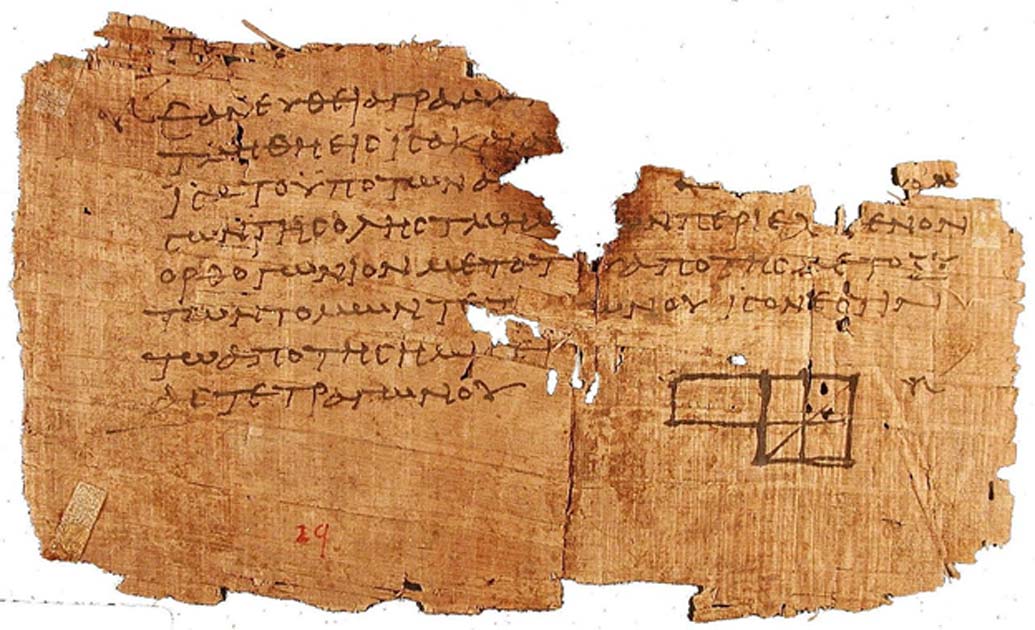
Origins and History
The town of Oxyrhynchus, located in Upper Egypt, was a regional administrative and economic center during the Greco-Roman period, particularly from the 4th century BC to the 7th century AD. The dry climate and the use of papyrus for writing materials led to the preservation of a vast number of documents. The papyri were discovered in the late 19th and early 20th centuries by archaeologists Bernard Grenfell and Arthur Hunt, who conducted excavations in the area.
These discoveries have proven to be a goldmine for scholars and historians, shedding light on various aspects of life in antiquity, including literature, philosophy, law, and religion. Among the most famous texts discovered are portions of lost works by famous Greek authors, including works of the playwright Menander and the lyric poet Sappho.
The Creator
The Oxrhynchus Papyri were created by a wide range of individuals and institutions over many centuries, from personal letters and literary works produced by individuals to legal documents issued by officials. The papyri offer a glimpse into the daily activities and intellectual pursuits of people across various social classes.
Fascinating Information
The significance of the Oxrhynchus Papyri extends beyond the scholarly community. In addition to literary texts, they contain records of taxation, wills, marriage contracts, and even shopping lists. This diverse range of documents has allowed historians to gain a more comprehensive understanding of everyday life in the Greco-Roman world.
One of the most notable discoveries among the Oxrhynchus Papyri was the Gospel of Thomas, a non-canonical Christian text. This gospel contains a collection of sayings attributed to Jesus and has generated significant interest and discussion among theologians and scholars of early Christianity.
Today, the Oxrhynchus Papyri are housed in various institutions, primarily the Sackler Library at the University of Oxford. They continue to be a rich source of information for researchers and scholars, helping to reconstruct the cultural and intellectual tapestry of the ancient world and providing a valuable connection to our shared human history.
The Golden Mask of Psusennes I: A Radiant Relic of Ancient Egypt
The Golden Mask of Psusennes I is a masterpiece of ancient Egyptian art and craftsmanship, an awe-inspiring testament to the regal splendor of the pharaohs. This magnificent artifact, which once graced the face of Pharaoh Psusennes I, is a symbol of the grandeur and reverence with which ancient Egyptians treated their kings.
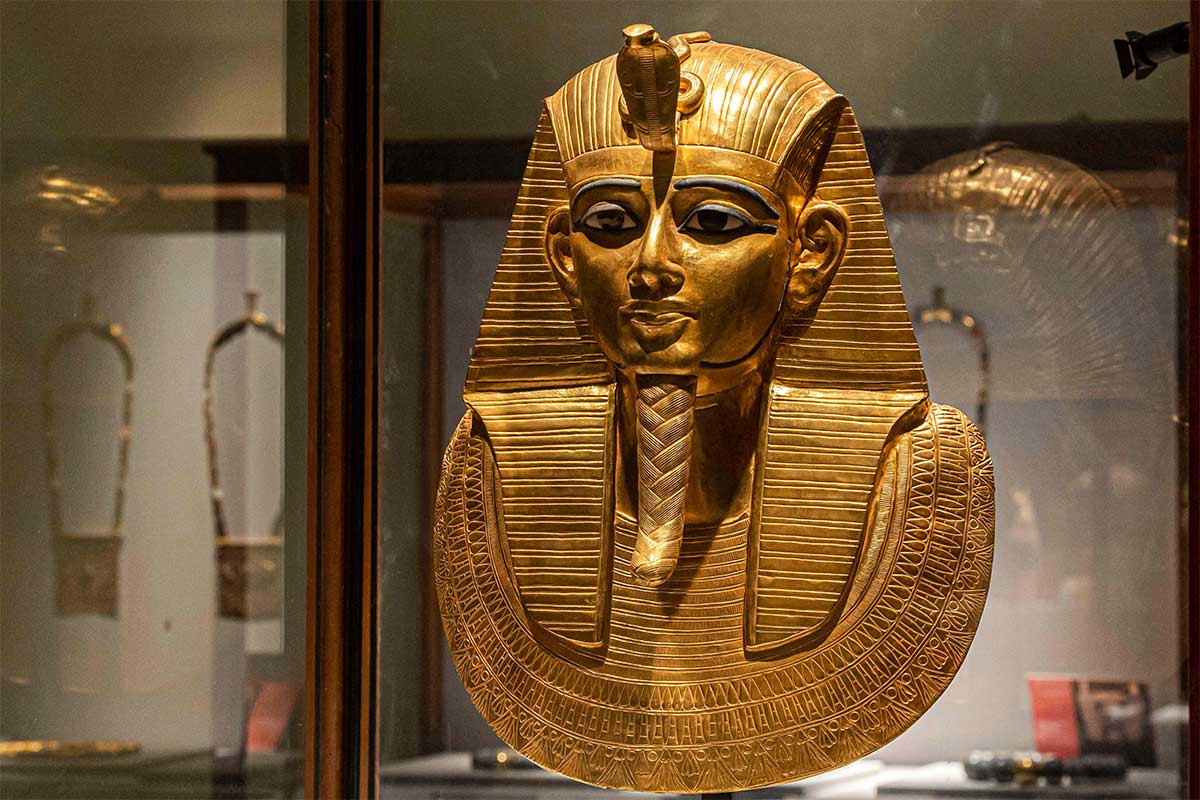
Origins and History
The Golden Mask of Psusennes I is believed to have been created during the Third Intermediate Period of ancient Egypt, around 1047-1001 BC. Psusennes I, the third ruler of the Twenty-First Dynasty, is considered one of the mightiest pharaohs of his time. His rule was marked by significant religious and political developments.
The mask was discovered in 1940 during the excavation of the royal burial grounds at Tanis, a city in the Nile Delta. It lay within the innermost coffin of the pharaoh’s burial chamber, a remarkable testament to the care and reverence given to the king even in death.
The Creator
The identity of the craftsman who created the Golden Mask of Psusennes I remains unknown. However, it is widely believed that skilled artisans and goldsmiths of the time, working under the royal court, were responsible for its creation.
Fascinating Information
The Golden Mask of Psusennes I is crafted from solid silver with gilding in gold leaf. It is adorned with precious stones, including lapis lazuli, turquoise, and carnelian, creating a stunning contrast with the golden surface. The mask covers the mummified face of the pharaoh, its delicate features exquisitely rendered.
The mask is not just an ornate piece of art but also a potent religious symbol. In ancient Egypt, gold was associated with the sun god Ra and immortality. It was believed that gold could preserve the pharaoh’s body and soul, ensuring his eternal life in the afterworld.
The Golden Mask of Psusennes I is now displayed in the Egyptian Museum in Cairo, where it continues to captivate and inspire visitors from around the world. It stands as a testament to the enduring legacy of the pharaohs and the artistic brilliance of the ancient Egyptians, reflecting their belief in the importance of the afterlife and the grandeur of their civilization.
The Seal of Tutankhamun: A Glimpse into Ancient Authority
The Seal of Tutankhamun, an emblem of power and significance, is a small yet invaluable artifact that provides insights into the rule and reign of one of ancient Egypt’s most renowned pharaohs. This royal seal, often known as a cartouche, was used to validate and authenticate the authority of the young king.
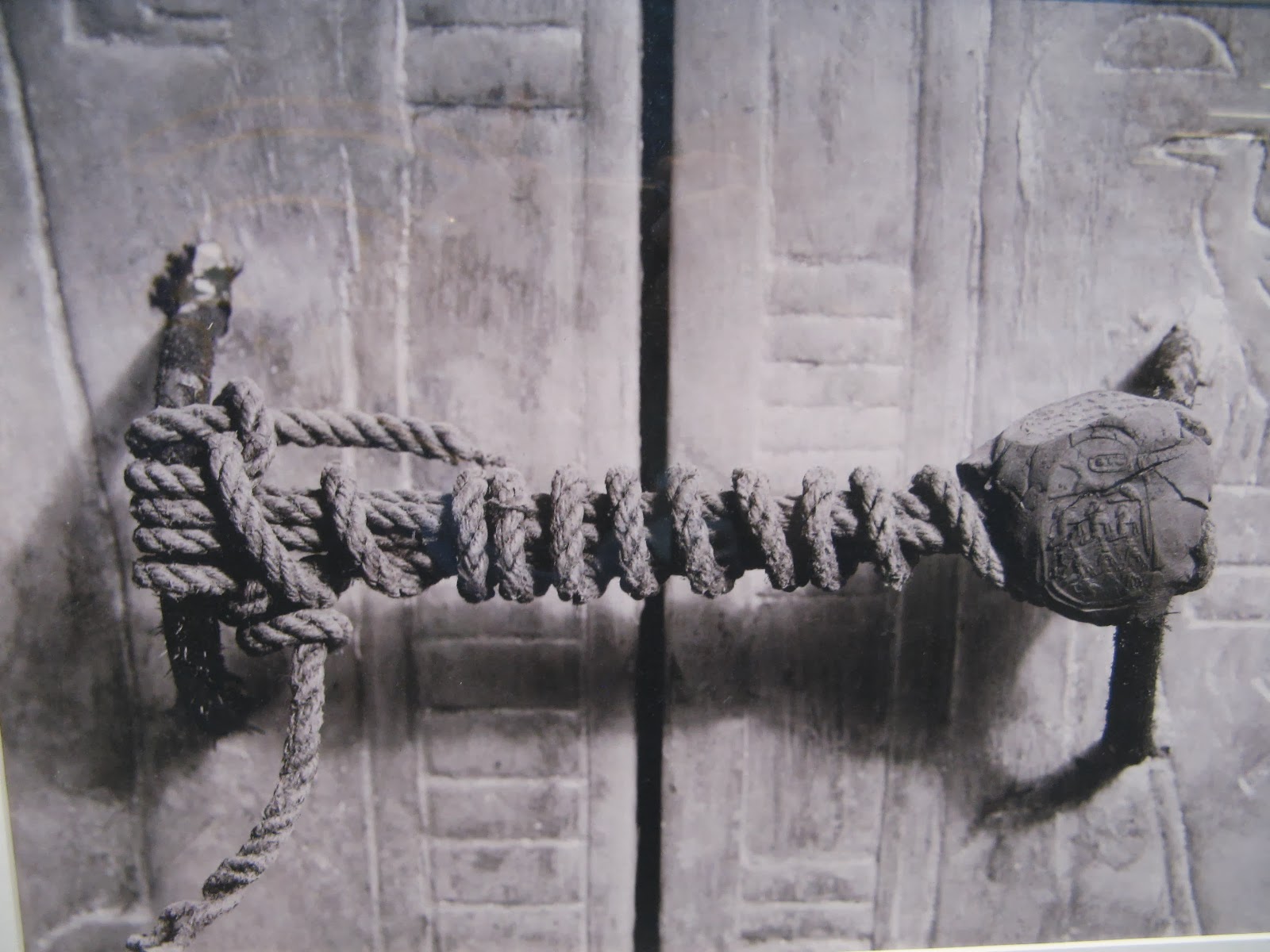
Origins and History
The Seal of Tutankhamun originated during the 18th Dynasty of the New Kingdom period in ancient Egypt, around 1332-1323 BC. It was crafted during the reign of Pharaoh Tutankhamun, who ascended to the throne at a young age. He ruled during a pivotal period in Egyptian history, marked by the reversal of religious reforms initiated by his predecessor, Akhenaten.
The cartouche, which is an oval-shaped frame surrounding a set of hieroglyphs, bears the name “Tutankhamun.” It was used to imprint this name on official documents and objects to authenticate them. It served as a symbol of the pharaoh’s authority and as a way to ensure that his decrees and orders were carried out.
The Creator
The Seal of Tutankhamun, like many ancient Egyptian artifacts, was created by skilled artisans and craftsmen of the time. These individuals were responsible for the intricate hieroglyphs and designs that adorned the seal.
Fascinating Information
The use of a cartouche in ancient Egypt was significant. It was not just a means of identification but also a representation of the pharaoh’s divine and earthly authority. The name enclosed within the cartouche served as a protective symbol, ensuring that the name and thus the person it represented would be remembered and protected for eternity.
The discovery of Tutankhamun’s tomb in 1922 by Howard Carter and Lord Carnarvon brought to light many significant artifacts, including the Seal of Tutankhamun. This discovery sparked global interest in Egyptology and provided a wealth of information about the life and rule of the boy king.
Today, the Seal of Tutankhamun, along with the other treasures from his tomb, is housed in the Egyptian Museum in Cairo. It continues to serve as a symbol of the young pharaoh’s enduring legacy and the enduring fascination with the art and culture of ancient Egypt.
Last Words
So, there you have it, folks! These top ancient Egyptian artifacts are more than just objects; they are gateways to a world filled with art, religion, and history. Each of these treasures whispers tales of a civilization that thrived along the banks of the Nile, and they continue to captivate and mystify us to this day.
As we gaze upon these artifacts, we are transported to a world where the grand monuments of the Colossi of Memnon and the Sphinx Stela bore witness to the power and significance of pharaohs, and where the simple scarab beetle symbolized the cyclical nature of life. The enduring allure of these treasures lies in their ability to connect us to the past, to the people who lived and breathed in the time of the great pyramids and the monumental temples.
These artifacts continue to be a source of wonder and inspiration for historians, archaeologists, and enthusiasts, offering a glimpse into the depth and diversity of ancient Egyptian culture. From royal regalia like the Golden Mask of Psusennes I to the humble writings of the Oxrhynchus Papyri, they each play a unique role in reconstructing the tapestry of this magnificent civilization.
Whether through their intricate designs, profound symbolism, or the stories they tell, these artifacts remind us of the enduring human quest to explore the past and understand the mysteries of our ancestors. They are not merely relics, but keys that unlock the doors to the rich history and culture of ancient Egypt, inviting us to walk in the footsteps of pharaohs and experience the grandeur of their world.
Conclusion
The ancient Egyptian artifacts discussed, including the Great Sphinx, the Eye of Horus, and the Pyramids of Giza, stand as enduring testaments to the remarkable civilization that thrived along the banks of the Nile River.
These artifacts not only showcase the advanced architectural and artistic skills of the ancient Egyptians but also offer a glimpse into the profound cultural and religious significance that these structures held for the people of that time.
Collectively, these artifacts underscore the richness of ancient Egyptian history and the enduring legacy of a civilization that has left an indelible mark on human civilization. As we marvel at these treasures from the past, we are reminded of the ingenuity and ingenuity of the ancient Egyptians, who crafted these timeless symbols that continue to fascinate and inspire awe in the modern era.
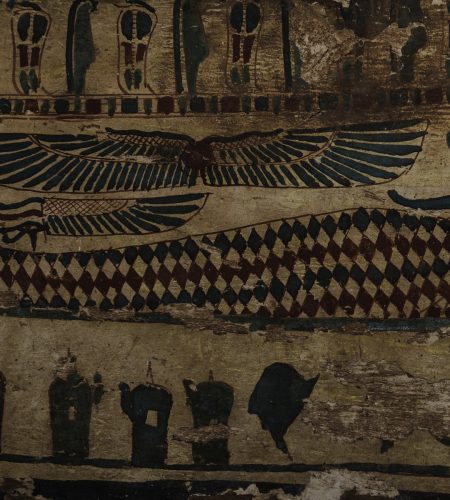
Comments